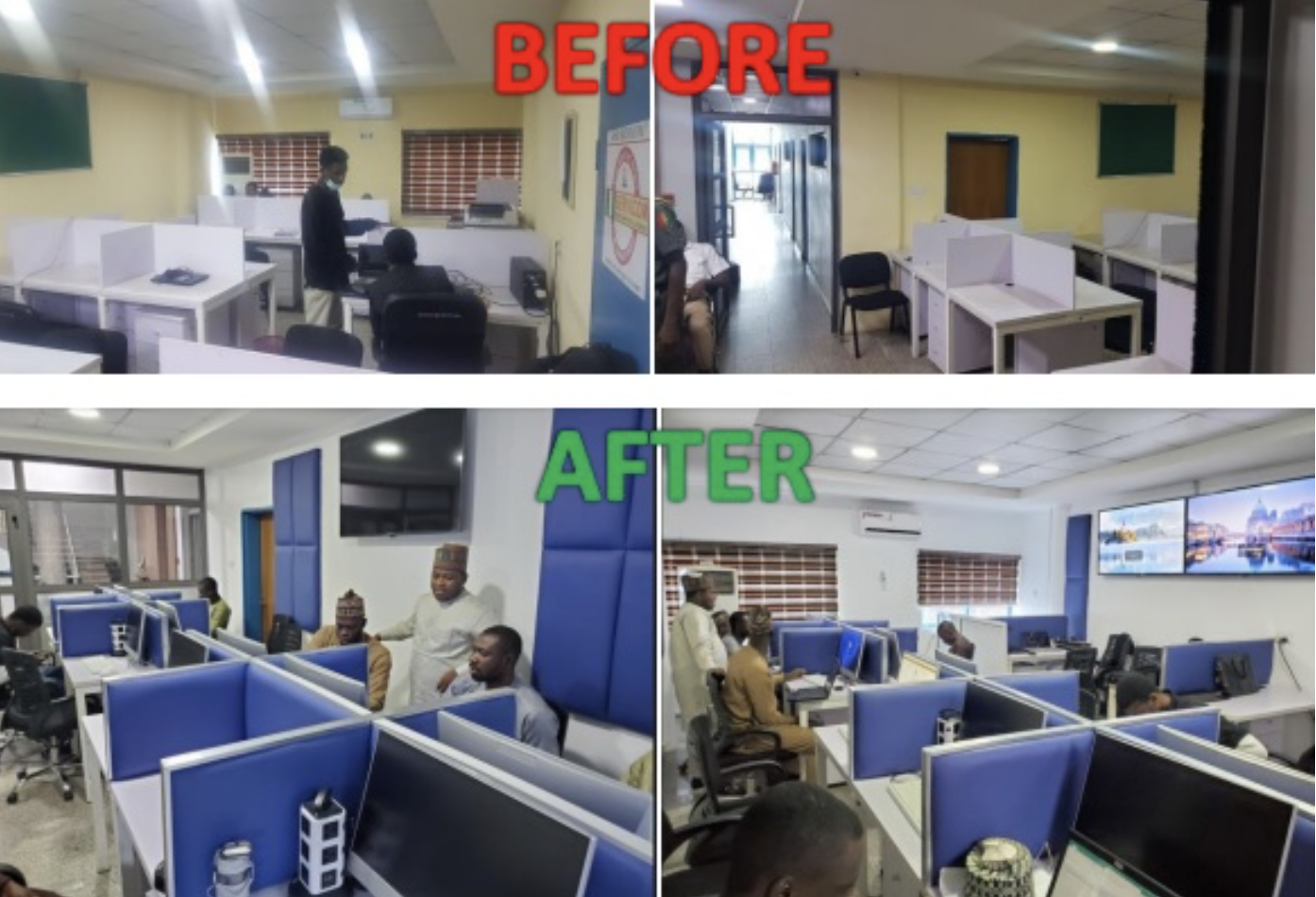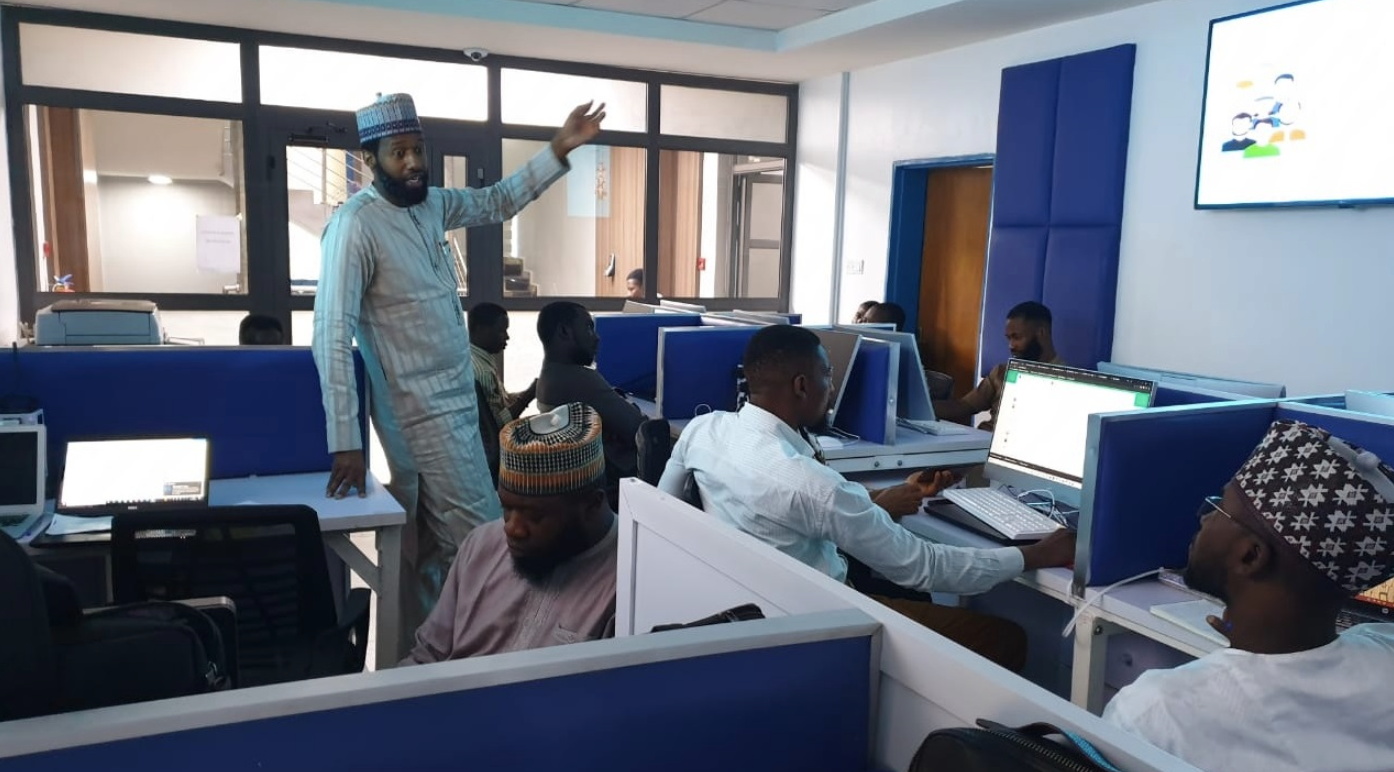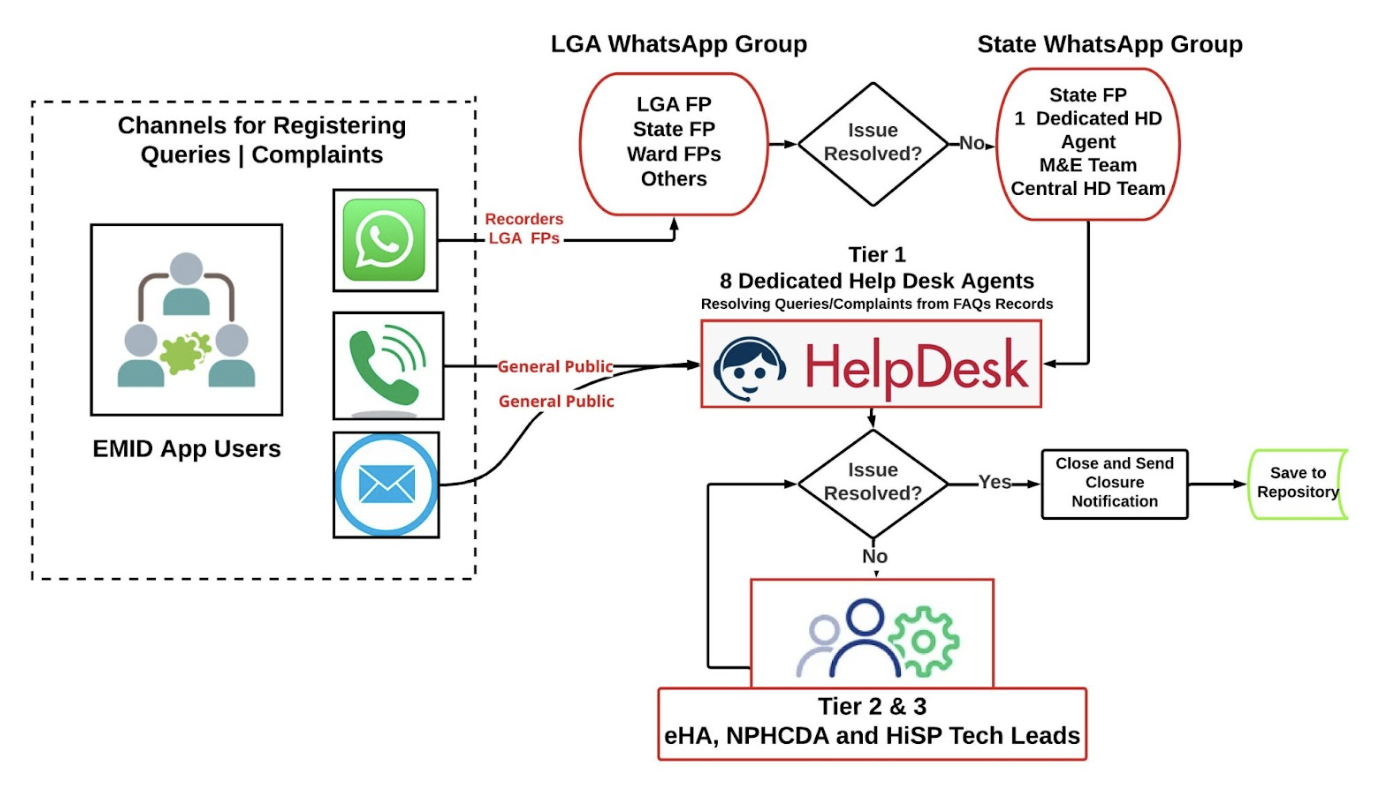By Emmanuel Uko
In 2022, eHealth Africa conducted a gap analysis to identify support areas for the Electronic Management of Immunization Data (EMID) system IT infrastructure. The analysis revealed the weaknesses and strengths of the current issue resolution approaches and the requirements for improving the current system. The help desk operations was identified to ensure the smooth utilization of the EMID system and increased vaccination coverage data in Nigeria.
Physical and infrastructural constraints were identified: the help desk occupied an open space that was easily accessible, the server room was unrestricted and thus used for other purposes, too. Basic work tools for call agents, like headsets, and laptops were either not available or obsolete.
Helpdesk setup at NHPCDA, before and after the optimization.
Photo Credit: eHA
Similarly, operational challenges also existed: downtimes, issues and resolutions were communicated to the leads only through Whatsapp. In addition, a web-based system where users could access resources and information to resolve issues was lacking. More so, information history showing trend of cases and projections was non-existent. There was no existing standard operating procedure for the help desk to guide the team on how to handle issues, especially during off-peak hours. Finally, the support process flow was not fully defined/documented. Thus, the optimization of the help desk support was needed.
“I learnt how to use the native EMID application, as it is more user-friendly than the old one. Specifically, the ability to contact help desk and lodge complaints almost in realtime, whenever issues need to be resolved, is a real advantage that will speed up our work.”
- Ojetade Victoria Oyebimpe, EMID Focal Person, Ede South LGA, Osun State.
eHealth Africa (eHA) software development and help desk teams worked to develop a real-time response structure that caters to users’ needs within the optimized EMID application. As is the universal practice, the structure provides a centralized help to users of the application. The improved EMID help desk at the National Primary Health Care Development Agency (NPHCDA) ensures availability of personnel at every level of troubleshooting, to resolve issues down to zero for both the NPHCDA staff and end users of the EMID app.
Solomon Emmanuel, eHA’s Manager, Helpdesk, anchors training for NPHCDA helpdesk agents.
Photo Credit: eHA
With support from the Global Alliance for Vaccines and Immunization (GAVI), eHealth Africa procured the required IT equipment and facilities for renewable energy to ensure uninterrupted power supply to the IT server rooms, secured furniture and fittings; planned and implemented the setup in collaboration with the NPHCDA. In addition, eHA organized training sessions for the ICT unit at the agency on standard help desk processes and procedures based on the Information Technology Infrastructure Library (ITIL) methodology. They defined, developed and documented standard operating procedures for help desk, operational-level and service-level agreements to guide process flow, from issues escalated by recorders to their resolution stage.
“The native EMID app now helps us determine who, how and where to send complaints to, unlike the old one.”
- Akinyemi Yemi, EMID Focal Person
Jamil Galadanchi, eHA’S Senior Manager, Software Engineering, during a training for NPHCDA, on use of the EMID software.
Photo Credit: eHA
eHA also provided suitable work areas to prevent noise penetration and work tools such as desktops and laptops, display screens with a display/monitor to enable the helpdesk operator to manage multiple screens. This allows for a quick review of the several platforms that may be needed to resolve an issue, or for real time monitoring of the key equipment needed to ensure the EMID system works adequately with limited downtime. eHA also set up the Zendesk application to issue ticket IDs and track issue resolution, an access control system for the help desk main entrance, IT office door leading to the server room, and the server room itself to prevent unnecessary access. Lastly, a solar energy system was also set up at the NPHCDA to power the facilities and ensure a 24-hour electricity supply.
“In addition to its capacity to validate clients’ records in real time, it is now easy to ask questions and access the help desk for support.”
- Egunsola Ayobami Abiodun, EMID Focal Person, Isale-Agbara PHC, Osogbo, Osun State
As a result of the optimization, the help desk can respond to different levels of issues raised. The diagrams below portray mapped help desk support flows according to Tiers 1, 2 and 3 support required. They depict the help desk process flow, from the EMID users, the channels for registering queries, the different levels of helpdesk support system, and the process of resolving issues, the operational phases of response to queries from the end users and the processes involved in using the Interactive Voice Response flow in reporting and resolving EMID issues.
Helpdesk support for pilot training and user assessment test
Image: eHA
Helpdesk support for pilot training and user assessment test
Image: eHA
In addition, below is the Interactive Voice Response (IVR) support flow:
Interactive voice response support flow
Image: eHA
The process of developing the EMID application got all stakeholders working together, each one fulfilling relevant roles for the optimization of the application and realization of the help desk setup. eHA and partners learned important lessons in the course of executing the project. Buy-in and collaboration by relevant stakeholders from the beginning of the project proved necessary for its successful implementation. Setting out deliberate strategies that enable all partners to be carried along especially during important planning and decision making processes, budgeting and procurement, contributed to attaining success. More so, aligning the scope of work with appropriate timelines helped partners to manage the project for successful delivery.
“The new desktop for helpdesk now helps in resolving issues quicker, the monitors and screens help to give a clearer view of the issues presented and there is now a better working environment that enables us to resolve issues more promptly.”
- Nabil Nuhu Bamalli, System Administrator at NPHCDA.






